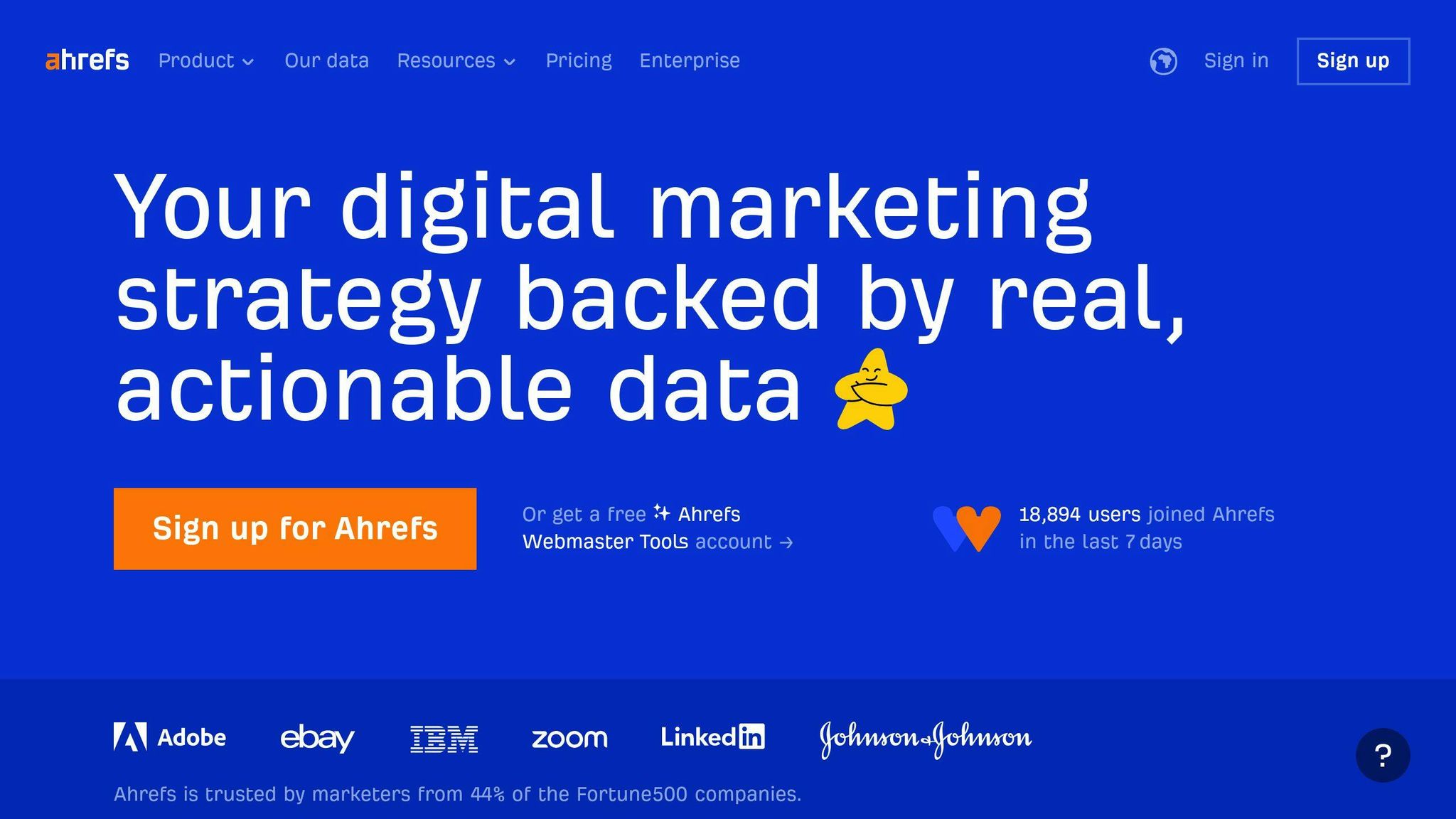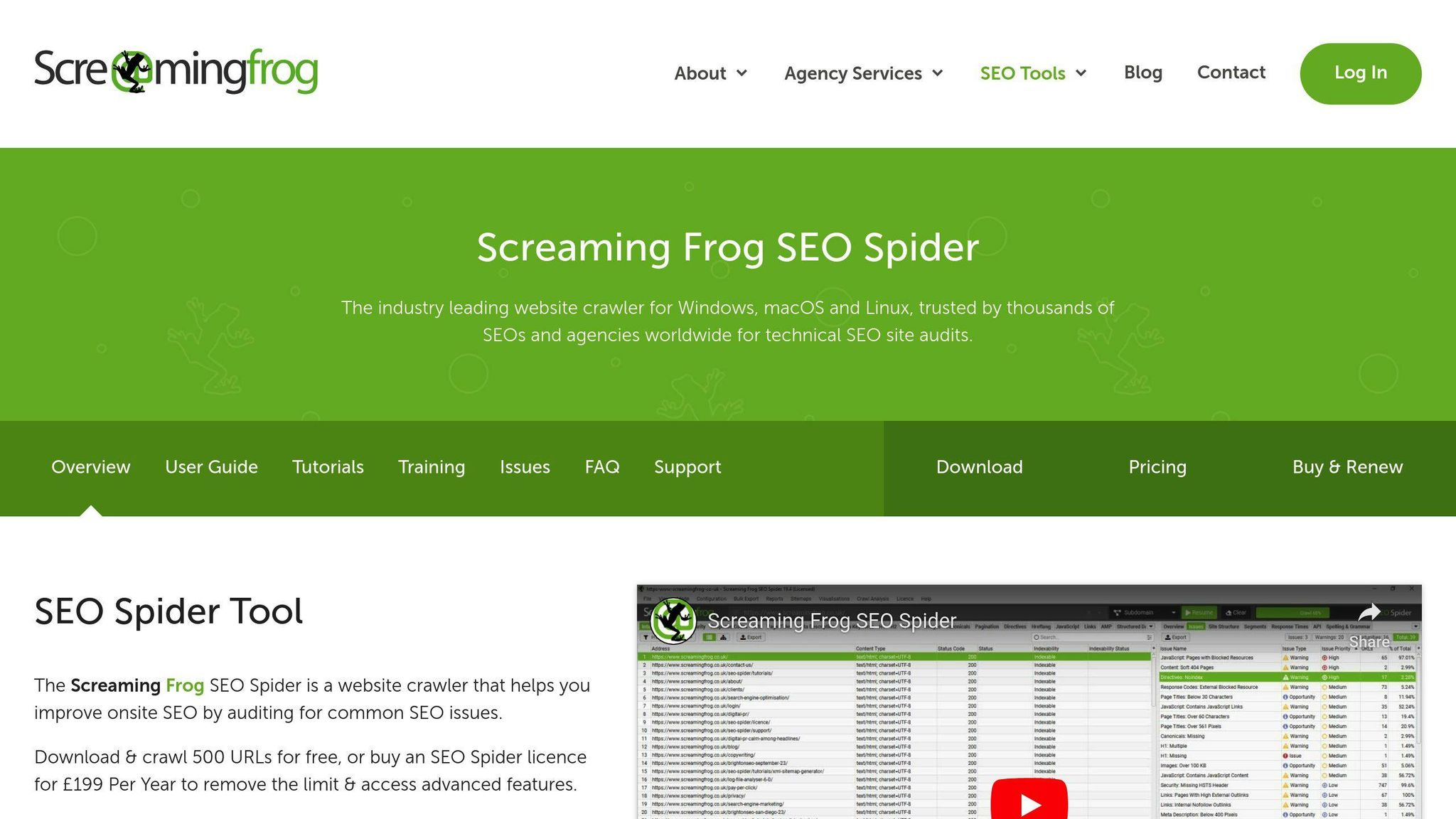Nofollow links are HTML attributes that prevent search engines from following the link and passing PageRank (link equity) to the linked page. They are commonly used for:
- Blog comments and forums to combat spam
- Sponsored content and affiliate links to indicate they are not endorsements
PageRank sculpting is the practice of strategically using nofollow links to control the flow of PageRank within a website. This optimizes the internal link structure by:
- Concentrating link equity on high-value pages
- Preventing PageRank from being wasted on less important pages
To effectively implement PageRank sculpting:
- Analyze your website's internal links to identify areas for optimization
- Use nofollow links to sculpt the flow of PageRank
- Avoid overusing nofollow links, which can hinder SEO performance
- Monitor PageRank distribution and adjust as needed
Tools like Ahrefs and Screaming Frog can help audit and manage nofollow links for optimal PageRank sculpting.
| Best Practices | Description |
|---|---|
| Use nofollow links strategically | Prevent PageRank waste |
| Optimize internal link structure | Focus link equity on key pages |
| Monitor PageRank distribution | Ensure critical pages get sufficient link equity |
| Avoid over-optimization | Prevent negative SEO impacts |
By following these best practices, webmasters can improve their website's SEO performance and search engine rankings.
Nofollow Links Explained
Nofollow links play a crucial role in SEO, and understanding their purpose is vital for website owners. In this section, we'll explore the history of the nofollow attribute, its function in SEO, and why it's used.
History of the Nofollow Attribute
In 2005, Google, Yahoo, and Microsoft introduced the nofollow attribute to combat comment spam on blogs and forums. The goal was to prevent spammers from manipulating search engine rankings by creating bogus links. Since then, the nofollow attribute has evolved to cover various use cases.
How Nofollow Affects PageRank
From a technical standpoint, nofollow links do not pass PageRank or link equity to the linked webpage. This means that search engines like Google do not consider nofollow links when calculating a website's ranking power. However, nofollow links can still:
- Drive traffic
- Increase brand awareness
- Contribute to a healthy backlink profile diversity
Here's a summary of how nofollow links work:
| What Nofollow Links Do | What Nofollow Links Don't Do |
|---|---|
| Drive traffic | Pass PageRank or link equity |
| Increase brand awareness | Help a website rank higher |
| Contribute to backlink profile diversity | Endorse a website |
In the next section, we'll explore the practical applications of nofollow links in SEO and provide guidance on when to use them effectively.
Using Nofollow Links for SEO
Using nofollow links strategically can improve your website's SEO performance and prevent potential penalties. In this section, we'll explore the best practices for utilizing nofollow links effectively.
When to Use Nofollow Links
Nofollow links are essential when you want to link to external websites without passing PageRank or endorsing their content. Here are some scenarios where using nofollow links is beneficial:
- Endorsed external websites: Use the
rel="nofollow"orrel="sponsored"attributes when linking to external websites for endorsements, affiliations, or sponsorships. - User-generated content: Apply
rel="nofollow"orrel="ugc"attributes to links within user-generated content, such as blog comments or forum posts, to manage the quality of outbound links and maintain your site's SEO health. - Irrelevant or spammy pages: Never use dofollow links for low-quality, irrelevant, or spammy pages to avoid passing on PageRank to them.
Pros and Cons of Nofollow Links
Here's a balanced look at the advantages and potential drawbacks of using nofollow links in SEO strategies:
| Pros | Cons |
|---|---|
| Prevents PageRank manipulation and penalties | Don't help with SEO like normal links do |
| Helps maintain a healthy backlink profile diversity | Overusing nofollow links can lead to inefficient use of crawl budget and potentially hinder a site's overall SEO performance |
| Discourages spammy behavior and keeps your website looking clean |
By understanding when to use nofollow links and their implications, you can optimize your website's SEO performance and avoid potential penalties. In the next section, we'll explore PageRank sculpting techniques and how to create a PageRank sculpting plan.
PageRank Sculpting Techniques
PageRank sculpting is a way to optimize your website's internal link structure to improve its authority and ranking. By directing link equity strategically, you can prevent PageRank from being wasted on less important pages.
Creating a PageRank Sculpting Plan
To create a PageRank sculpting plan, follow these steps:
1. Analyze your website's internal link structure: Identify areas where PageRank is being wasted and opportunities to optimize link equity distribution.
2. Identify high-value content: Determine which content deserves more link equity.
3. Implement nofollow attributes strategically: Prevent link equity from flowing to less important pages.
4. Balance PageRank flow: Ensure critical pages receive sufficient link equity.
By following these steps, you can optimize your website's internal link structure for maximum SEO benefits.
Avoiding PageRank Sculpting Mistakes
When implementing PageRank sculpting techniques, avoid these common mistakes:
| Mistake | Consequence |
|---|---|
| Overusing nofollow attributes | Inefficient use of crawl budget and hindered SEO performance |
| Failing to balance PageRank flow | Critical pages not receiving sufficient link equity |
| Neglecting to monitor PageRank distribution | Missed opportunities for optimization |
By being aware of these mistakes, you can ensure that your PageRank sculpting efforts are effective and beneficial to your website's SEO performance.
sbb-itb-60aa125
Tools for Managing Nofollow Links
To optimize your website's internal link structure and prevent PageRank from being wasted, you need to manage nofollow links effectively. Here are two popular SEO tools to help you achieve this: Ahrefs and Screaming Frog.
Using Ahrefs for Nofollow Links

Ahrefs is a comprehensive SEO tool that offers various features to analyze and manage nofollow links. With Ahrefs, you can:
| Feature | Description |
|---|---|
| Identify nofollow links | Use the "Overview" report in Site Explorer to identify nofollow links on your website |
| Analyze link profile | Check the proportion of followed vs. nofollowed links for any website or webpage |
| Filter backlinks | Use the "Backlinks" report to filter backlinks by "Do/NoFollow" and get a precise overview of your dofollow/nofollow backlinks |
By using Ahrefs, you can gain valuable insights into your website's link profile and make data-driven decisions to optimize your internal link structure.
Screaming Frog for Nofollow Audits

Screaming Frog is another powerful SEO tool that offers a comprehensive audit of nofollow links on your website. With Screaming Frog, you can:
| Feature | Description |
|---|---|
| Crawl website | Crawl your website to identify nofollow links and analyze their influence on SEO |
| Filter inlinks | Filter the "Inlinks" tab to display links that are either follow or nofollow |
| Identify rel attributes | Use the "Rel" column to identify specific rel attributes, such as "ugc" or "nofollow" |
| Perform comprehensive crawl | Perform a comprehensive crawl of your site to ensure you're getting a thorough audit of nofollow links |
By leveraging Screaming Frog, you can identify areas where PageRank is being wasted and optimize your internal link structure for maximum SEO benefits.
Remember, effective management of nofollow links is crucial for optimizing your website's internal link structure and preventing PageRank from being wasted. By utilizing tools like Ahrefs and Screaming Frog, you can gain valuable insights and make data-driven decisions to improve your website's SEO performance.
Key Points on Nofollow and PageRank
Here are the essential points to remember about nofollow links and PageRank sculpting:
Nofollow links tell search engines not to follow a specific link or pass link equity to the linked page. This attribute helps prevent PageRank from being wasted on unimportant pages.
PageRank sculpting is a technique used to control the flow of PageRank within a website by strategically using nofollow links. This technique helps optimize internal link structure, concentrate link juice on high-value pages, and improve overall SEO performance.
Effective PageRank sculpting requires a thorough understanding of how nofollow links work and how to use them strategically. It's essential to avoid common mistakes that can negatively impact a website's SEO performance.
Nofollow Links and PageRank Sculpting: Best Practices
| Best Practice | Description |
|---|---|
| Use nofollow links strategically | Prevent PageRank from being wasted on unimportant pages |
| Optimize internal link structure | Concentrate link juice on high-value pages |
| Monitor PageRank distribution | Ensure critical pages receive sufficient link equity |
| Avoid over-optimization | Prevent negative consequences for SEO performance |
By following these best practices, webmasters can make informed decisions about their internal link structure and optimize their website for better search engine rankings and authority.
FAQs
Why is internal linking a good strategy in SEO?
Internal links are important for three main reasons:
- They help search engines understand your site's structure: Internal links guide search engines like Google to crawl and index your website's pages more efficiently.
- They pass authority: Internal links distribute link equity from one page to another, helping to boost the ranking power of your website.
- They help users navigate your site: Internal links make it easy for users to find related content, improving their overall experience on your website.
By using internal links strategically, you can optimize your website's architecture, distribute link equity effectively, and improve user experience. This can lead to better search engine rankings and increased authority.


